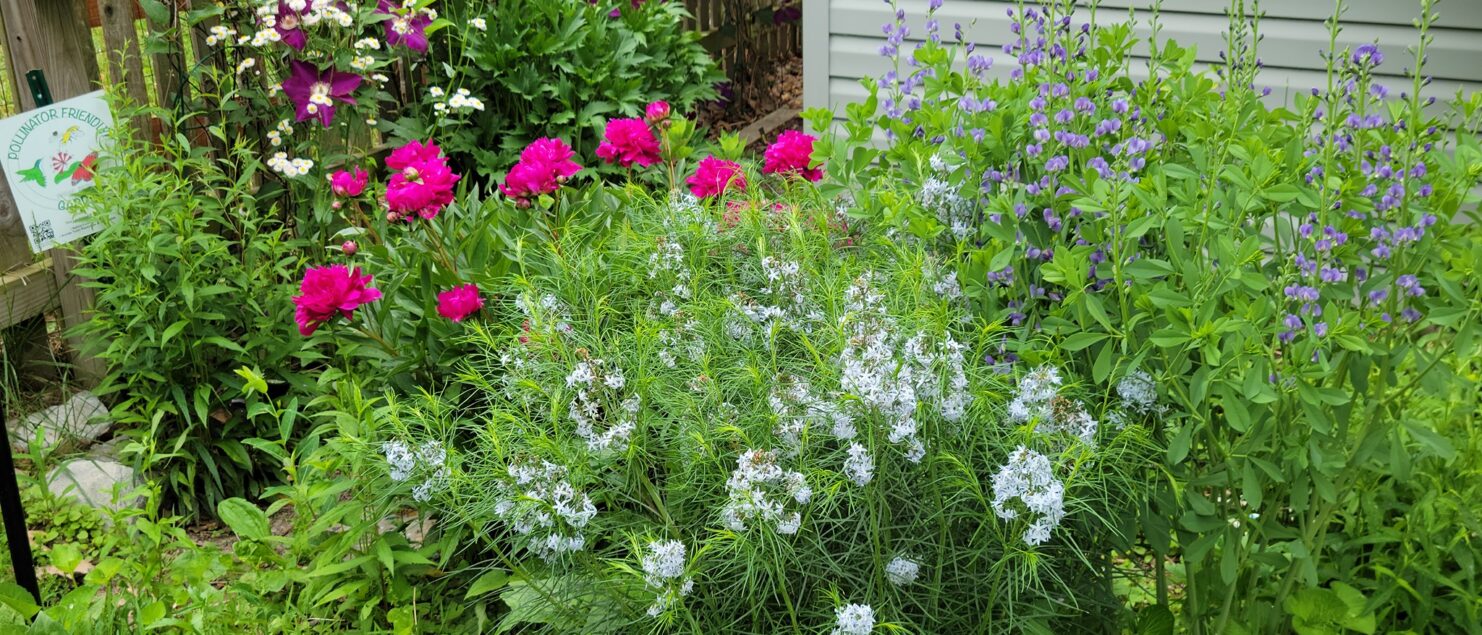Plan now for Summer’s Bounty
Frederick-based experts offer advice for your spring garden
Most successful home gardens require year-round attention and now is the time to plan for summer’s bounty. Experts including Frederick County’s master gardeners and Antonette Vasseur of Rooted & Wild Garden Design in Brunswick say planning and envisioning your ideal garden now will go a long way to getting you to your ideal space come the warm months.
To select plants for a new garden, Frederick County master gardener Maritta Grau suggests having your “soil analyzed [and] determining the prevailing winds, the amount of sunlight/shade available, and the moisture the area will get.”
Most vegetables – including tomatoes, onions, potatoes, green beans, squashes, peas, cucumbers, peppers and even peanuts, do well in the Frederick area’s characteristic silty- and clay-loam soils, as do many flowers, including roses, says master gardener Sheila Baylor. “Research should be conducted to ensure that the plant’s natural growing conditions can be met,” she adds. “Avoid plants that are not winter-hardy to the zone, or are prone to fungal infection in humid areas.”
Grau suggests checking out what does well in your neighborhood, and plan from there.
“It’s probably best to observe neighbors’ yards and see what plants are doing well,” she says.
Permaculture designer Vasseur believes in “intentional gardening, working with nature” and establishing healthy soil. In her planning, the “observation” stage comes first.
“I take a holistic, aesthetic approach, seeing where everything goes – sun, shade, water flow – identifying your microclimate, and paying attention to how you will interact with the space,” in terms of traffic and privacy needs.
“I like to mimic what nature does in the forest: plant to capture water, and have the plants support each other,” Vasseur says.
This serves the ecosystem and your family; an added bonus is that the garden will “require a little less maintenance.” Her designs focus on diverse native plants in an effort toward “regenerative agriculture.”
For her next step, “visioning,” Vasseur recommends creating a Pinterest board of preferred colors and textures, and intentional spaces such as a place to enjoy morning coffee or serve as a memorial space.
“Consider how your choices will affect you, your neighbors and the ecosystem,” she says.
Use pencil and paper, or a computer program, to work out where to place plants. This enables you to consider both available space and views of the garden, Grau says. Multiple factors deserve examination – “the mature size (height and width), leaf types and colors of the selected plants, and envision how they will look together. A general rule is to place the “tallest plants in the back, next-tallest in the middle, and shortest in the front. Think about bloom times of the various species, and whether they will die off during the summer, leaving a gap [in the garden],” Grau says.
Plan in stages, Vasseur counsels.
“Baby-step it,” as necessary, developing a vision for the future according to available funds and time. Implementation follows: “Just do it!, she says.
For an existing garden, “study the garden to see if any plants have overgrown their allotted space, and if you’re still able to navigate through the garden,” Grau says. Sometimes, for example, you may need to remove a source of too much shade or change the kinds of annuals or perennials.
To ready existing beds for planting, says Baylor, rake off mulch and remove any cardboard or paper material that has not broken down into compost. Do not till the bed, which would destroy microorganisms and soil structure; instead, dig holes as planting instructions specify, then water well. Add an inch of compost.
April is a good time to plant trees, shrubs, perennials and evergreens, and to divide perennials. First-time perennial dividers can consult the University of Maryland Extension (extension.umd.edu) website for directions.
Hint: It largely depends on the type of plant.
“Iris roots, for example, may barely be covered by soil, while hostas may have just the crown of the plant sticking above the soil,” Grau explains.
Once you determine where to place the divided plants, “dig up the perennial, roots and all; cut root divisions with a sharp knife or pry apart sections. Bury the roots of the new plants in the ground to the same level the mother plant was,” she says.
Blades should be cleaned after every use and sharpened as needed.
Grau often fertilizes when she plants. Thereafter, she usually fertilizes flowers, new trees, or shrubs every two weeks until mid-September. Mulch in the spring, she says, “keeping it a few inches from the trunk or shrub stems, spreading it evenly to the drip lines of the branches and piling it up a little to make a dike that will help hold the water in.”
Weeding weekly – or more often, she says, “allows wanted plants to grow and keeps invasives under control.”
Prune flowering shrubs and vines in May, directly after they bloom, and plant warm-season annuals and tender bulbs both in the ground and in containers, as well as warm-season vegetables and new fruit plants after the last frost.
After Mother’s Day, Vasseur says, is the best time to plant edibles as well as bushes and native pollinating flowers.
Spring Garden Preparation Checklist:
- Get your shed in order.
- Check over your tools.
- Clear out weeds, mulch and debris.
- Do a spring cleaning of the garden, pruning or removing anything in the way.
- Apply compost to established garden beds.
- Set up new planters and garden beds.
- Divide perennials, such as daylilies.
Article by Ellyn Wexler

